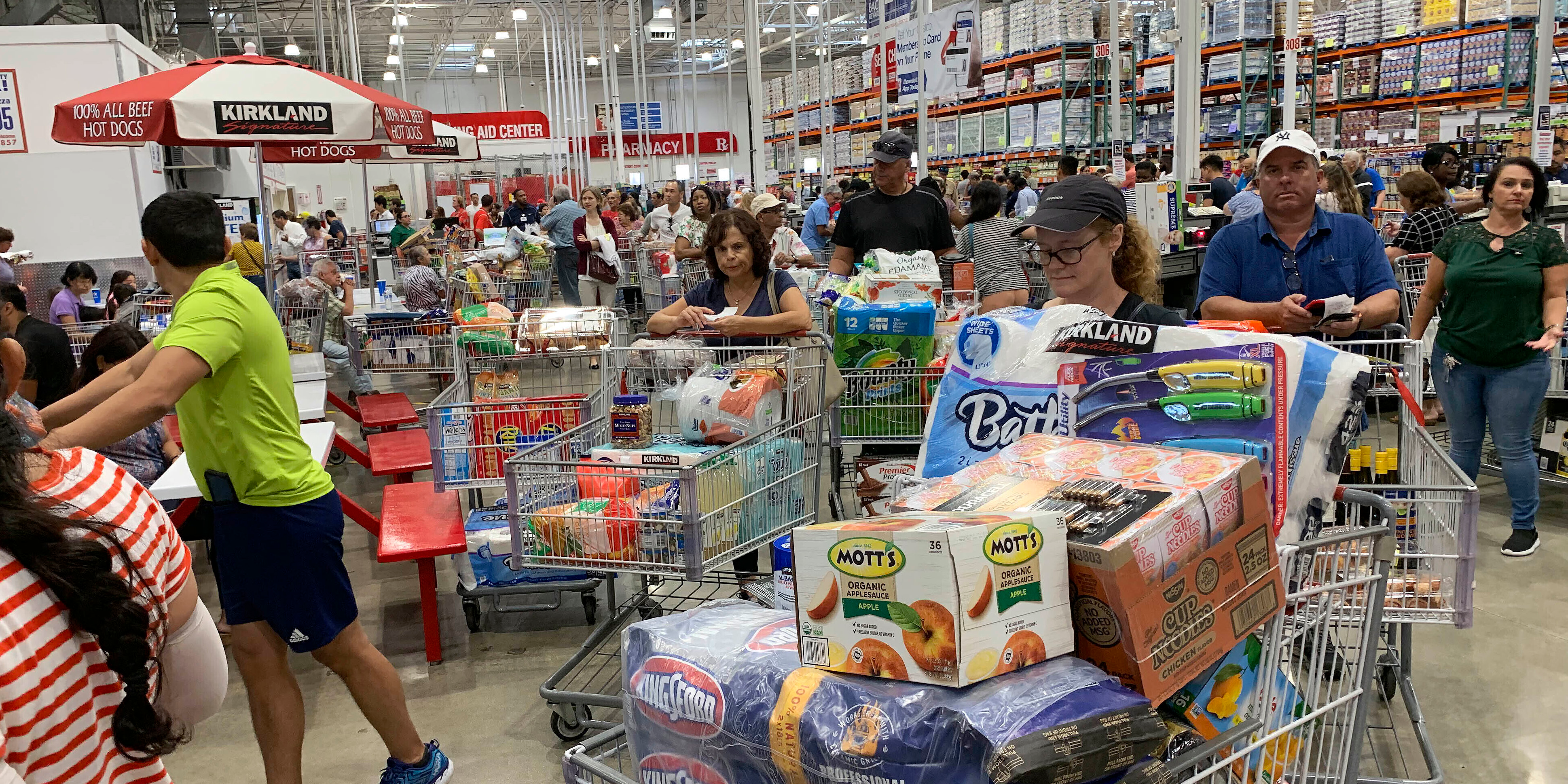- US consumer household finances are showing signs of trouble, according to a report by UBS.
- The report also showed that lower income consumers are being hit the hardest.
- US household spending accounts for 70% of gross domestic product and is a major driver of the economy. If it slows, it could spell trouble ahead.
- While UBS’s consumer health indicator doesn’t show an alarming reading, analysts say to watch sentiment for further signs of distress.
- Read more on Business Insider.
US consumers are finding it increasingly difficult for their incomes to comfortably cover all expenses. And it could mean that some will be unable to repay their debts, according to a UBS report.
As many as 44% of consumers said their incomes don’t cover expenses, up from a year ago and an above average reading, according to the report, which surveyed roughly 2,100 respondents. In addition, 40% said they had a problem getting a credit card or applying for a student loan default, up 3% from last year.
“Credit trends in US consumer markets are more worrisome, particularly in unsecured loan markets as the lower-tier consumer comes under further pressure with lending standards tightening, delinquencies rising, and interest rates near peak levels, ” wrote Matthew Mish of UBS in the report.
The report shows that as macroeconomic trends deteriorate, they’re starting to impact the US consumer. Even UBS has lowered its expectations for US growth through the end of next year. The firm lowered its 2020 gross domestic product forecast to 1.3%, and its unemployment forecast to 4.1%.
If that weakened outlook comes to fruition, it could add stress to the consumer forecast, the analysts wrote. UBS already expects that losses in consumer lending will likely increase.
That could be a problem for the US economy, as household spending accounts for roughly 70% of GDP growth. As the trade war rages on, it's seeping into consumer sentiment, which is the lowest it's been in nine months. In addition, even though the unemployment number has ticked down, wage growth has slowed, putting additional pressure on consumers.
The report showed that consumers are feeling the pressure in applying for loans such as credit cards and home mortgages. Seventy-five percent said it would be easy to get a home loan, down 6% on the year and the lowest level since 2014.
There are also signs that a tightening credit market is leading consumers to falsify parts of their loan applications. The number of those who say their mortgage applications aren't completely accurate has increased by 2% to 21%.
While the deteriorating consumer finance trends are troubling, they don't necessarily point to the end of the consumer credit cycle, wrote Mish. UBS's consumer health indicator, which includes finance criteria along with other economic data, stands at 0.1 after the third quarter. Before the 2007 and 2001 recessions, the indicator read 0.7 - a higher score generally means lower consumer health, according to the report.
Still, economic pressure is adding stress for consumers, lower income ones - 69% said they're stressed because of their expense coverage situation, while 39% of middle income respondents and 26% of high income consumers said the same.
These levels are worse than they were last quarter and last year, according to the report.

